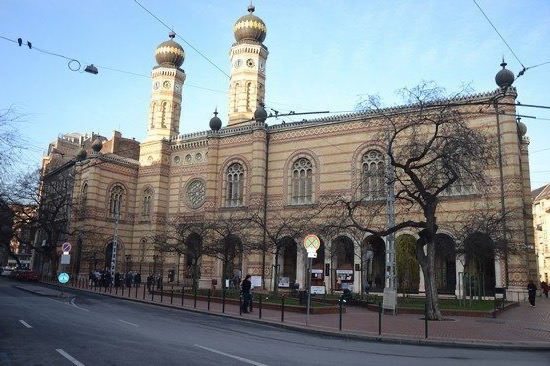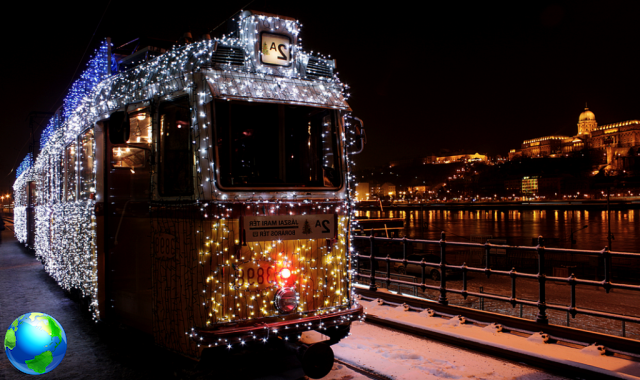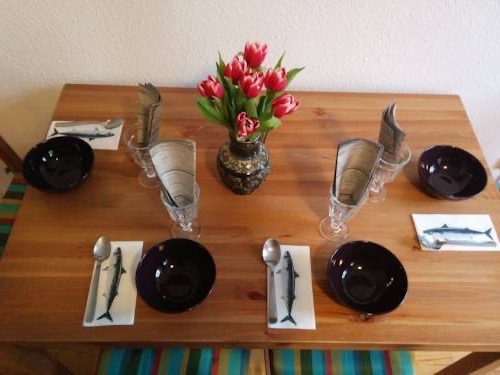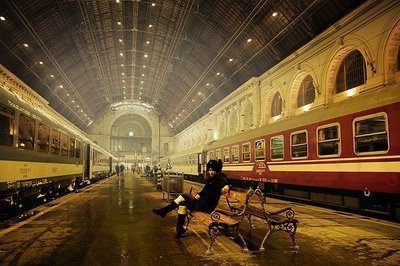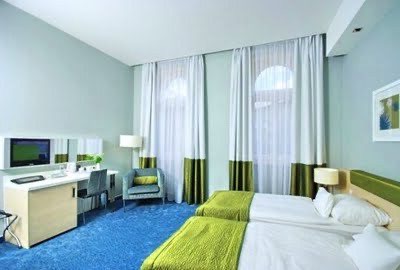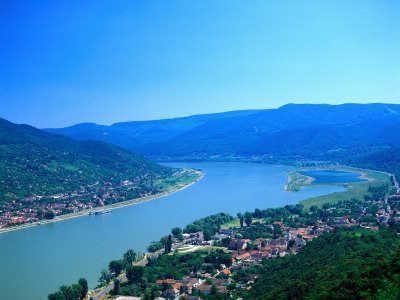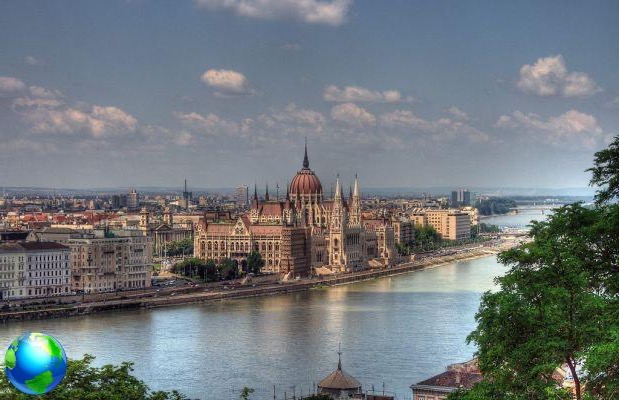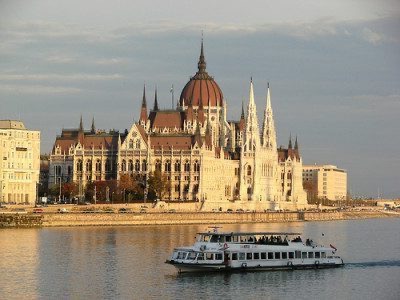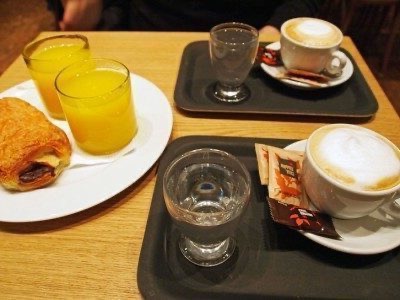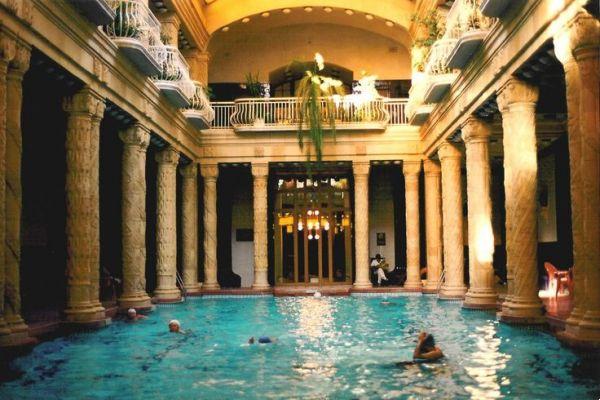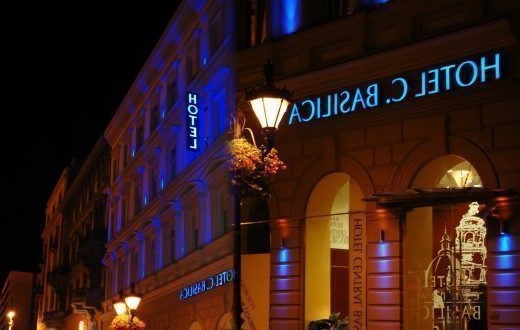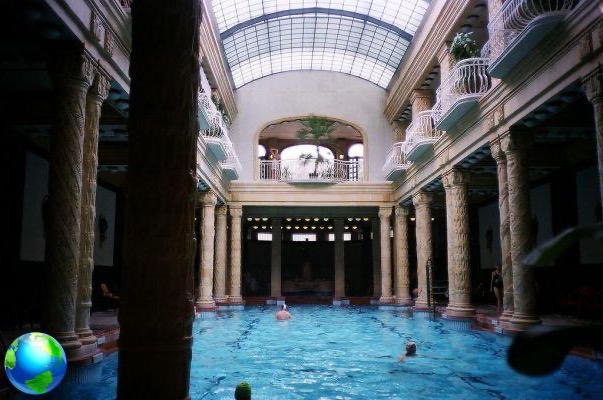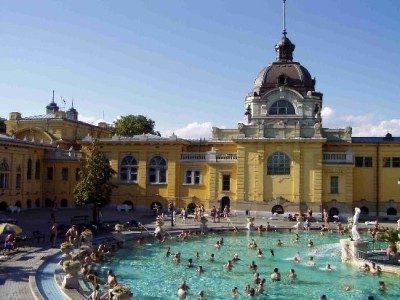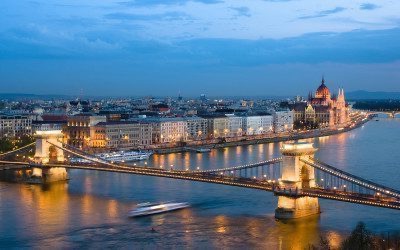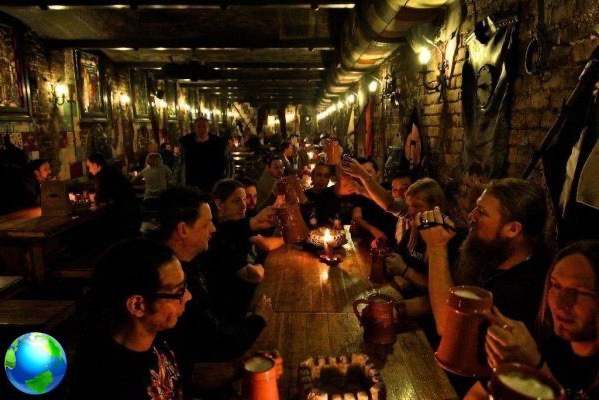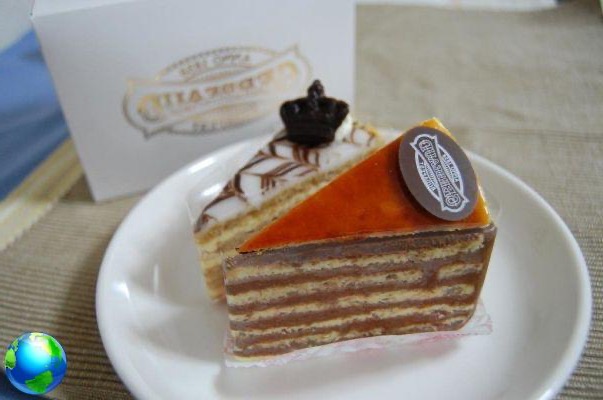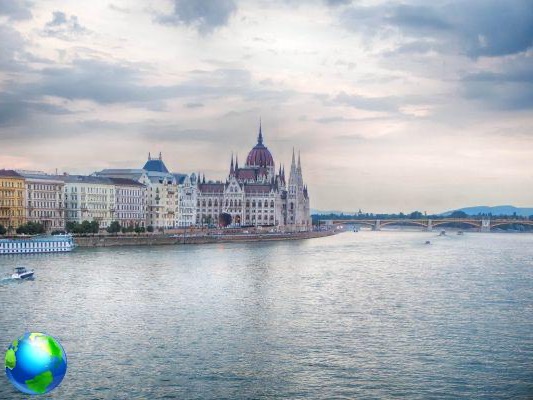Budapest, or the 'pearl of the Danube', formed by Buddha and Pest, a truly unmissable city as far as I'm concerned. As lavish and regal as Prague and Vienna, however, Budapest has remained a more authentic city (at least for now!) Where opulent buildings, art nouveau splendors and dilapidated condos coexist. It has not yet been polished, as has happened in other European capitals, but it is clearly perceived that a process of 'tourist' reconstruction of the city is underway that will certainly change its face in the coming years. My dispassionate advice is therefore to visit it as soon as you can !! In this article I suggest you all the things to see in Budapest in 3 days, but know that to see it well you will need more, at least 4 or 5 (even the surroundings are not bad at all!). To orient yourself in the city, between the two sides of the Danube (Buda and Pest) and the main monuments, I recommend that you take part in a 2h free tour (in Spanish), where the guide will explain the history of the city and take you to see some of the most important attractions. I always make them and I find them very useful!

When to go to Budapest
Budapest has a continental climate, like the rest of the country, with very hot summers (with peaks exceeding 30 °) e very cold winters (well below zero). I was there for the first time in January and then in September; the winter atmosphere is very nice (I had found the snow with some beautiful sunny days), but the cold was at the limit of bearable! In September I enjoyed it a lot more. Spring and autumn are certainly the best seasons to avoid dying from either heat or cold.
The coin. Where to change in Budapest
In Hungary the Hungarian forint (HUF) and the exchange rate with the euro is quite variable (however, it is around 330/350 florins for 1 euro). Credit cards are very popular and accepted so, in principle, you may be able to almost never change cash. If you still need to change, avoid changing money at the airport, at non-bank ATMs (it's full around, but they charge crazy fees!) e do not change on the street. The best thing to do is change in exchange offices, checking 2-3 first and choosing the one with the most favorable rate (and commission).

How to get to the center of Budapest from the airport
Budapest Ferenc Liszt Airport is located 22 kilometers southeast of the city center. The solutions to reach the city center are:
- Bus 200E + metro (line 3-blue): the cheapest solution. With the metro from Deak Ferenc Ter or Kalvin Ter you can reach almost all areas of the city.
- Taxi or Bolt: calculate about 25 euros
- Private transfer: bookable in advance through this site and very convenient. 27 euros for a 4-person car.
Getting around in Budapest
Most of Budapest's attractions are within walking distance of each other (except Memento Park or Varosliget), especially if you are a good walker, but it is very easy to get around either by public transport ( subway, bus and tram) or by taxi, or by Bolt (an app practically the same as Uber that I recommend you download before leaving). The ticket for an urban metro / bus / tram ride costs 350 HUT (approximately 1 euro), but there are also 10-ticket booklets and passes for 1 or more days. If you decide to buy the Budapest Card instead (see below), the means of transport will be included and unlimited.

Budapest Card: is it worth it? Info and prices
La Budapest Card it is a flat rate card that can be purchased for 24, 48 or 72h (for 22, 33, 43 euros) which includes a whole range of services, with considerable potential savings if you intend to travel a lot and see as much as possible. More specifically, here is what is included in the Budapest Card:
- Free delivery of the card to your hotel
- Free access to the main museums of the city
- Ticket for the Lukács Baths
- Unlimited public transport
- Two private city tours (in English)
- Discounts at over 100 tourist attractions, shops and restaurants
Budapest: where to sleep
I have to admit that I was quite impressed with the accommodation prices in Budapest and it is not at all easy to find affordable accommodation in the city center. Regardless of this, however, for me the most comfortable areas to stay are those around Deák Ferenc Square and towards Jewish quarter. From these areas you can either move easily on foot or take several metro lines.
- Maverik City Lodge: a modern and very nice hostel 750 meters from the Deák Ferenc Tér. It has both dorms and double rooms.
- Flow Hostel Budapest: design hostel very close to the Central Market and the Liberty Bridge. It has both dorms and double rooms.
- Anabelle B&B: a very nice and welcoming b & b a stone's throw from the Parliament

What to see in Budapest in 3 days
As I mentioned above, 3 days are really the minimum wage to visit Budapest. There are so many things to see, but in 3 days you can certainly get a good idea of the city. As you will see, my schedule is super busy (maybe too much for normal people!) And it's only feasible by waking up early in the morning and walking like a Sherpa. Feel free to cut here and there! I will try to recommend the things I liked the most between Buddha (the part west of the Danube where the castle is located) e Pest, the part to the east, where the Parliament is located, where "normal life" in the city mostly takes place and where you will spend most of your trip to Budapest.
You might be interested in this Free tour of Budapest (2h) in Spanish
Day 1: what to see in Buda (Castle, Matthias Church, etc.)
Buda Castle
Your 3-day visit to Budapest can only start from Imperial Castle of Buda, overlooking the Danube from above. Built in the XNUMXth century, the castle was then heavily remodeled under the Habsburgs and rebuilt after the bombings that destroyed a large part of the city in World War II (now it is again cordoned off for renovation). Maria Theresa of Austria and Franz Joseph wanted a royal residence at the height of the Viennese ones but, in fact, they only made short stays in this castle. Today inside the castle are the offices of the Prime Minister, the Hungarian National Gallery and Budapest History Museum. The best thing for me is actually the view from here, because the view sweeps 360 ° on the river, the Parliament, the Liberty Bridge and all the rest.
Matthias Church
A few hundred meters from the castle you will immediately notice the Gothic Matthias Church, with the beautiful roof covered with painted polychrome tiles (it reminds a little of the St. Stephen's Cathedral in Vienna). Admission is paid (around 5 euros), but the ticket is worth paying. Built in the thirteenth century, in the place where a church already stood, it assumed its current dimensions in the fourteenth and fifteenth centuries. Under the Turks the church was transformed into a mosque, until the liberation in 1686. They were crowned here Carlo Roberto d'Angiò (in 1309) and, above all, the emperor of Austria Franz Joseph I and his wife Elizabeth (Princess Sissi).



Fishermen's Bastion
Among the things to see in Budapest in 3 days you cannot miss the Fishermen's Bastion, one of the most iconic and photographed places in the city. This complex of bastions and turrets that seems to come out of a fairy tale was built between 1800 and 1900 to celebrate the city's thousand years in 1896 and has never served as a defensive work. The Bastion is located exactly behind the Matthias Church and the walkway offers some of the most beautiful views and glimpses of Budapest. The lower walkway is free, the upper one is paid, but the view changes very little. Under the arches there are also 2 super romantic cafes where you can have a drink with a view of the Danube and the Parliament.
Hospital in the Rock
This hospital in the Rock it is by far one of the most interesting things you can visit in Budapest! The hill of Buda Castle is dotted with caves and some of these hosted, during World War II and then with the revolution against the Russians of 1956, an incredible underground military hospital run by the Red Cross. The hospital extends for 4 km underground and more than 200 patients could have been rescued (it even hosted 600!). During the 1h guided tour (compulsory, it costs about 13 euros and is very well done) you can see the operating room, the wards, the infirmary and even an anti-nuclear bunker (luckily never used!). Unfortunately it is not possible to take pictures inside (but if you want to get an idea you can see the official website).


Chain Bridge and Liberty Bridge
The two banks of the Danube are connected by several bridges but the most beautiful and famous are certainly the Chain Bridge (under the Buda Castle) and the Liberty Bridge (between the Central Market and the Hotel Gellért). The first is the oldest bridge in the city, it is a stone and iron bridge that is beautifully illuminated in the evening (at the moment it is closed for restoration, October 2021). The Liberty Bridge is an iron bridge (Brooklin Bridge style in New York) and was inaugurated in 18976.
Gellért Baths or Rudas Baths
You cannot visit Budapest without spending at least a few hours in one of its magnificent ones thermal baths. The city in fact is full of underground thermal springs already in use in Roman times and then became the hub of city life during the Ottoman domination. The set of baths includes 10 bathing establishments and 7 spas, which differ in the types of pools they have, in the massages they offer and in the style: they range from neo-baroque to art nouveau or Ottoman styles. The inhabitants of Budapest frequent the spas a lot and during the weekend they are always very busy (there are even disco evenings in bathing suits!). Among the most beautiful bathrooms, there are certainly the Gellért Baths and Rudas baths, which are both located in Buda, in front of the Liberty Bridge. THE Gellért Baths they are among the most spectacular ever, they are located in the hotel of the same name and you will feel like you are trapped in Wes Anderson's Grand Budapest Hotel! Also Rudas baths they are very beautiful, but they are very similar to what you may have seen in Istanbul. If you intend to come to the bathrooms, remember to pack your swimsuit, slippers, cap and towel (although you can also rent them there, for a fee). If you come there on the weekend I recommend that you buy your ticket online first, especially if you want to have a massage too (I hadn't booked and I was screwed!).
- Buy the entrance ticket for the Gellért Baths online
- Buy online the entrance ticket for the Gellért Baths + massage



Central Market
Markets always tell a lot about cities, and the Central Market Budapest is no exception. This large 5-nave building is located in Pest, exactly on the opposite side of the Liberty Bridge from the Gellért Baths. It is a market on two floors: in the lower part there is a riot of stalls with fruit, vegetables and all other foodstuffs, while on the first floor there are craft and souvenir shops and a succession of bars and cafeterias. The Central Market is open from 6am to 17pm Monday to Friday and Saturdays from 6am to 14pm. On Sundays it is closed.
Cruise with aperitif or dinner on the Danube
The first of the 3 days in Budapest is almost over! If you have survived this far, I recommend that you finish with a beautiful cruise on the Danube, to see many of the most important monuments of the city fully illuminated. The Danube cruise I definitely put it among the must of things to see in Budapest in 3 days. There are different types of cruises, there is one at sunset of 1h (with drink included), or those with dinner and, if desired, also live music. Below you will find the links to book them. Most cruises depart from this pier.
- Sunset boat ride (1h with drink)
- Boat trip with buffet dinner and live music (departure at 19:00 - 2h)
- Boat tour with buffet dinner and live music (departure at 22:00 - 1h 30 ')


Day 2: what to see in Pest (Parliament, Jewish quarter)
Parliament
Il Hungarian Parliament it is undoubtedly another of the things to see in Budapest during the 3 days of visiting the city. It is a truly imposing palace, with two symmetrical wings, which rather resembles a neo-Gothic cathedral; built between 1885 and 1902, the Parliament is full of pinnacles, spiers and domes of rare beauty. The Parliament overlooks the Danube on one side and a large square on the other and 88 statues of Hungarian kings and military leaders are lined up on the facades. Today it is the seat of the Presidency of the Republic and of the National Assembly, but it is still possible to visit some internal rooms such as the beautiful one staircase of honor and hall of the Cupola, immense, which contains i Crown Jewels and other rooms. The guided tours they last about 1h, they are available in different languages (also in Spanish) and must be booked a few days in advance through the official website. For EU citizens the price is 3500 HUT (about 10 euros).
Shoe Memorial
A few tens of meters from the Parliament, on the quay along the Danube, there is this touching memorial dedicated to the massacre of the Jews perpetrated by Nazi troops during World War II. 60 pairs of metal shoes to remember the executions that often took place right next to the river, and the bodies were then thrown into the Danube.



Gresham Palace and the Hungarian Secession House
During the second half of the 1900s, Hungary was overwhelmed by a wave of modernity which often resulted in the construction of large public and private works in the secessionist style. Art Nouveau was already taking hold in a large part of Europe (for example in Vienna and Prague), but in Hungary it is declined in Secession, with references to the history and typical art of the country. Budapest today is full of magnificent buildings built in this style. Among the most fascinating there are certainly Palazzo Gresham and House of the Ungherse Secession. The former is one of the most important buildings in the city and today houses a luxury hotel. The other is called Casa Bedo and exhibits a beautiful collection of art nouveau objects. Magnificent also the Postal Savings Bank with a polychrome majolica roof; to see it at its best, treat yourself to an aperitif from Intermezzo, rooftopbar dell’Hotel President which is right in front of you (better to book in advance).


St. Stephen's Basilica and Vaci Utca
Not far from Gresham Palace is the imposing St. Stephen's Basilica, in neo-Renaissance style, was inaugurated by the Emperor Franz Joseph in 1906. Inside, in the Chapel of the Holy Right there is the most important relic, that is the one which, it is supposed, was the hand of Saint Stephen. By buying a ticket, you can also climb the tower that surmounts the dome, which offers a magnificent view over the center of Budapest. It also begins near the Basilica Vaci Utca, the most famous pedestrian street in Budapest, its shopping street par excellence.
Opera House
During my visit to Budapest (September 2021) the Opera House was closed for restoration (like so many other buildings and monuments in the city), but should reopen soon. The Hungarian State Opera House is an imposing building and was built at the end of the 800th century and has a truly sumptuous interior (so they say). Normally it is possible to visit it by participating in one guided tour, check it has reopened on the site before you go.


The Jewish quarter: street art and Cafè New York
The old Jewish quarter of Budapest (Erzébetvaros) is one of the most fascinating areas of the city for me, absolutely not to be missed both day and night. It is littered with dilapidated condos (some secessionist style) very nice, full of street art, of incredible synagogues (see below), of clubs, bars and restaurants, in fact it is the most lively and lively district of Budapest. There street art it is almost everywhere, and among the murals there is the one dedicated to Rubik (the inventor of the famous cube), whose Hungarian origins I did not know. The beautiful is also located in this neighborhood New York Cafe, a historic café that has always been appreciated by journalists, writers and poets. It is a super pompous cafe, reminiscent of Viennese cafes. To better understand the history of the neighborhood and not to miss a single mural, it is worth attending this one guided tour of the neighborhood (in Spanish - 3h - 14 euros).


Rumbach Synagogue and Via Dohany Synagogue (Great Synagogue)
Among the things to see in Budapest in 3 days you cannot miss the two synagogues in the Jewish quarter. There Rumbach Synagogue it is a jewel and, not surprisingly, it was designed by the Viennese architect Otto Wagner at the end of the 800th century. The entrance ticket (around 7 euros) is really expensive, but in my opinion it's worth it. Its golden decorations on pastel blue made me crazy (also very Wes Anderson style). Not far away there is the Via Dohany Synagogue, the largest synagogue in Europe and the second in the world after that of New York. Here, too, you have to pay a fairly expensive ticket (about 10 euros) to enter, but it is included guided tour (optional and also in Spanish) which I found really interesting. The synagogue can accommodate up to 3000 people and was built in the Byzantine-Moorish style (it is definitely sumptuous compared to the other synagogues I have visited in my life). Inside the Great Synagogue complex, with the same ticket you can also see the Jewish Museum and Garden of Remembrance.
You may be interested in this tour of the Jewish quarter in Spanish (3h - 14 euros)


Ervin Szabò Library
Another place that I loved very much during my visit to Budapest is there Ervin Szabò Library, on the edge of the Jewish quarter. The library is spread over 3 buildings and the main one is in neo-baroque style. It is very popular with students from the nearby university, but you can buy a ticket for 1500 HUF (around 4-5 euros) to visit the beautifully decorated rooms on the 4th floor, where students are lucky enough to study in what was once from the dance halls, private lounges or the smoking room, magnificent with carved wood paneling. In theory you could not take pictures inside, but you will see them taken by everyone (and I have adapted).
I Ruin Bars (Simple Garden)
This second day of visit is also coming to an end and I recommend that you close the evening by staying in the Jewish quarter to go and drink / eat in one of the famous romkert (or Ruin Bars or bar in ruins). We are talking about alternative premises born in the early 2000s, set up inside more or less abandoned buildings or former industrial warehouses or warehouses. The most famous of the Ruin Bars is lo Szimpla Kert, an immense room, on two floors with many rooms and lounges. Throughout the neighborhood, however, you will find many super good restaurants and cafes to spend the evening.



Day 3: Andrassy ut, Memento Park, Terror House
Hosok Tere (Heroes' Square) and Varosliget Park
In the last of the 3 days in Budapest you can see and visit very different places, according to your tastes, choosing between different options. If there is a beautiful sunny day, for example, you can start it from the Varosliget park, arriving in the monumental Heroes' Square (Hosok Tere). This square is at the end of Andrassy ut, the most elegant boulevard in Budapest, where you will find luxury shops, theaters, museums and embassies. In the center of the square is the Millennial Monument, with a column supporting the archangel Gabriel, surrounded by two semicircular colonnades. Behind the latter begins the Varosliget Park, one of the most beautiful in Budapest, with several museums inside, a castle and various ponds. In winter you can ice skate here.
Hungarian House of Photography and Robert Capa Museum
Walking on Andrassy ut towards the center of Budapest, on two different streets there are two museums dedicated to photography. The first is the Hungarian House of Photography, housed in the former home and photographic studio of the photographer Mai Manò; the location itself is very beautiful and quite interesting temporary exhibitions are held there. The second is the Robert Capa Contemporary Center of Photography, named after the famous war photographer of Hungarian origin. Here, too, photographic exhibitions take place which change quite often.


Terror House
Just before turning to the two museums mentioned above, still on Andrassy ut you will notice on the right a strange building with a negative writing coming out of the roof. This is the Terror House, or House of Terror, a particularly painful place of memory. This building in fact housed the headquarters of the Hungarian Nazis, then from 1945 to 1956 it was the headquarters of the Communist political police. The museum is full of historical artifacts, films and photographs; in the basement it is possible to see the torture cells. Each room has panels in English, but if you want to learn more, you should take the audio guide.
Memento Park
Il Memento Park I couldn't see it but I wanted to. This Statue Park is located 15 km south of the center of Budapest and is very special. It is a park where huge statues and monuments erected during the Communist regime are exhibited which have been dismantled and reassembled here. The scenic effect they say is quite impressive! There is also a cinema room with footage of the secret services and a shop to buy souvenirs with communist symbols.


What to see in Budapest (and surroundings) in 4 days: Szentendre
If you have more than 3 days to visit Budapest, you can definitely dedicate a day to a trip outside the city. I have decided to visit Szentendre, the town of Hungarian artists. Szentendre (St. Andrew in Spanish) is located along the Danube, about 20 km north of Budapest, and can be reached by boat (1h30 '), by train (when I went, train + substitute bus actually, 1h) , or with an organized tour. The town is small and cozy and is full of art galleries, antique shops, bars and restaurants. It is a little gem that can be visited entirely on foot in less than 2 hours. If you want to take the opportunity to see other places, you can book aexcursion which, in addition to Szentendre, also includes Esztergom and Visegrad.






